Huddersfield Energy & Recycling Facility (2021)
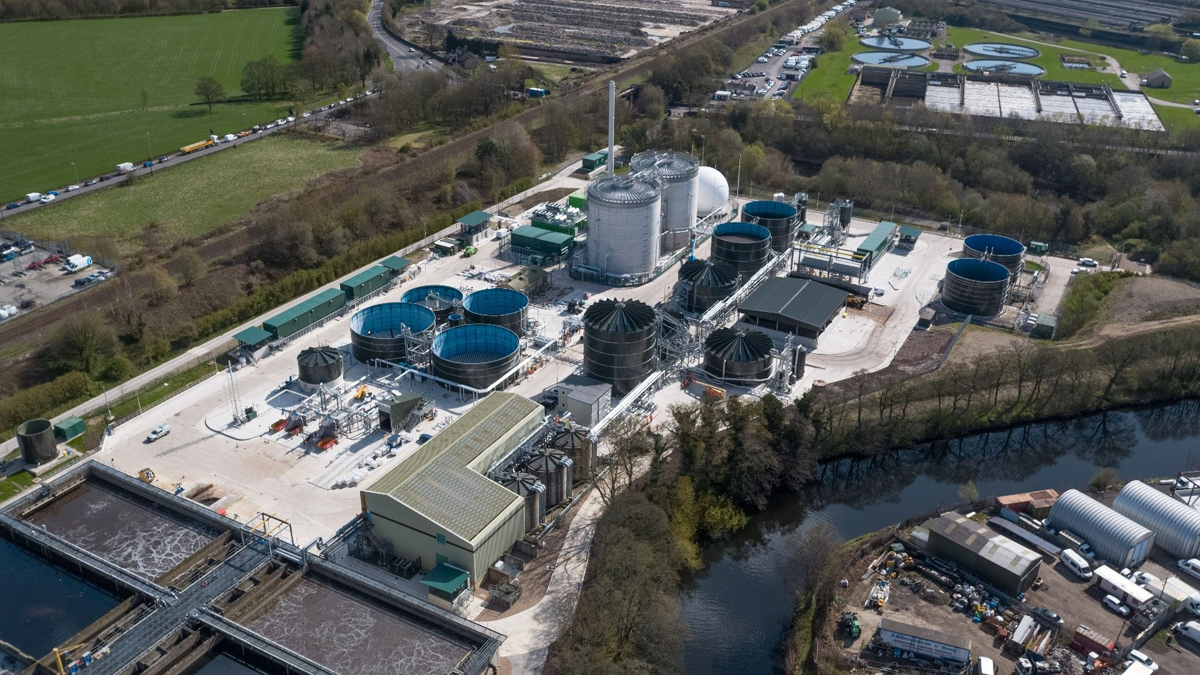
General view of Huddersfield E&RF under construction - Courtesy of YWS
Sludge treatment in the Huddersfield area was previously provided by incineration at Calder Valley Incinerator, located at Yorkshire Water’s Upper Brighouse Site. This incinerator has been inoperable since a weather event in 2015. Following a strategic review, Yorkshire Water Services (YWS) decided to progress with conventional mesophilic anaerobic digestion (MAD) plant supported by lime sanitisation of the digested product to secure the long-term treatment of sludge for the area. The change in treatment direction brings the benefit of renewable generation from biogas production and increased reliability and performance. The total cost for the project is £50m. This case study follows on from an initial paper in 2020 and details the progress of the works.
Sludge imports: Progress August 2021
The new sludge imports facility is fully operational and accepting liquid and sludge cake imports daily. The scope of works includes:
- Imported sludge tanker points for cake and liquid sludge: The imported liquid sludge is discharged to the sludge screen feed tank before screening. Sludge cake is received at the cake reception plant where it is re-watered to 6 % DS .
- Imported sludge screening: Liquid sludge gravitates from the storage tank through the screens and it is then pumped to the thickener feed tanks upstream of the sludge thickening facility.
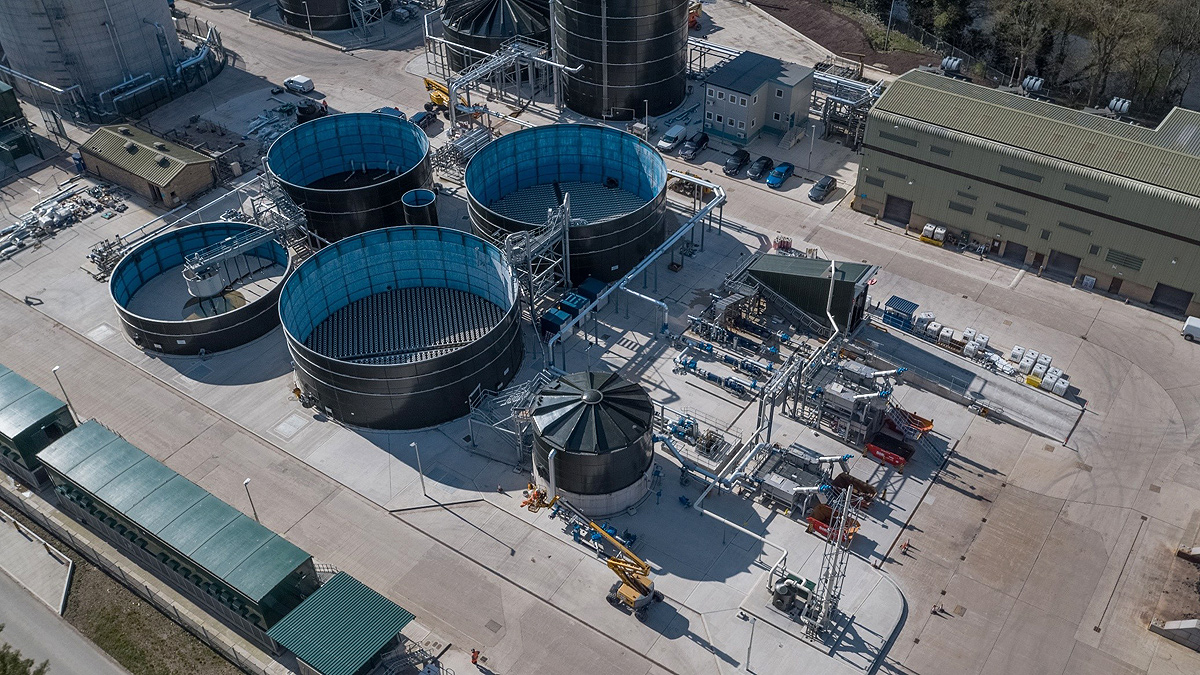
Sludge imports facility – Courtesy of YWS
Huddersfield Energy & Recycling Facility: Supply chain – key participants
- Design and build contractor: J Murphy & Sons Ltd
- Process, mechanical & electrical contractor: Murphy Process Engineering
- Process safety consultants: SWECO
- Civil design consultants: GHD
- Temporary works: MGF Ltd
- Control panels: CEMA Ltd
- Electrical installation: Murphy Electrical Services
- Tanks: Balmoral Tanks
- Cake reception unit: Samson Materials Handling Ltd
- Sludge screens: Huber Technology
- Liquid poly system: Northern Pump Suppliers
- Drum thickeners: Alfa Laval Ltd
- Digester mixing: Landia UK Ltd
- Heat exchangers: HRS Heat Exchangers Ltd
- Gas holder: AJ Tensile Biogas Systems Ltd
- Waste gas burner: Uniflare Ltd
- Siloxane removal: Higgins & Hewins Ltd
- Large scale blending (back mixing) and thickened sludge transfer open hopper T range PC pumps (HERF): SEEPEX UK Ltd
- CHP: Clarke Energy
- Boiler: Shaw Renewables
- Powder poly system: Richard Alan Engineering
- Dewatering centrifuge: Alfa Laval Ltd
- Return liquor treatment plant: ACWA Services Ltd
- Odour control: Greenacre Environmental Systems Ltd
- Flow control: AFFCO Flow Control (UK) Ltd
Sludge thickening: Progress August 2021
A new project milestone was introduced to the scheme to provide YW with beneficial use of the thickening and dewatering facility. These processes were brought on stream for indigenous SAS in December 2020. Thickening of imported sludge commenced with acceptance of imports in March 2021. The new sludge thickening facility includes:
- Combined import and SAS thickening.
- Liquid polyelectrolyte addition.
- 3 (No.) dual drum thickeners (duty/duty/standby). thickening to >6%.
- Pre and post thickening sludge storage.
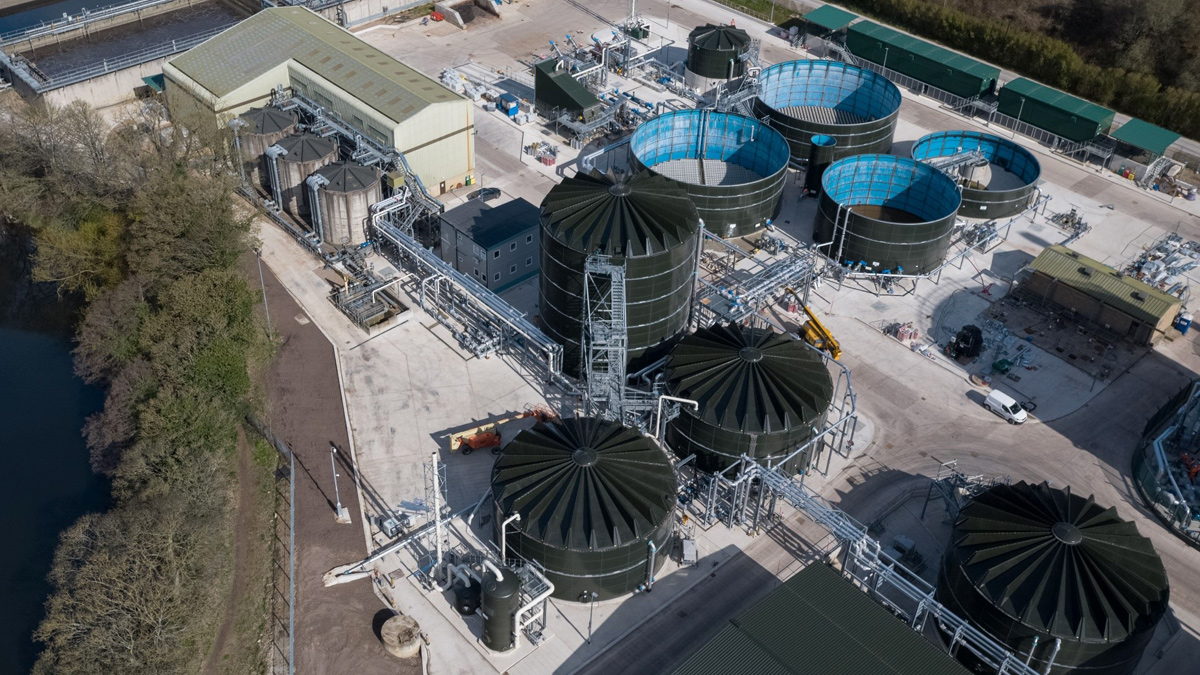
Sludge thickening process area – Courtesy of YWS
Sludge digestion: Progress August 2021
The sludge digestion process was commissioned successfully in May 2021, using seed sludge from Knostrop WWTW. The digestion plant is currently accepting loads of 50 tDS and producing 15,000 Nm3/d of biogas, with a methane content of 63 -66 %. The boiler and CHPs are also operational, with in excess of 30,000 kWh produced daily.
Digestion mixing is provided using Landia mixing pumps. Lithium tracer tests have been completed and confirm the required mixing performance has been achieved.
The digestion plant comprises:
- Digester feeding system: Re-watered sludge cake and thickened sludge are fed to the digester feed tanks from where it is pumped to the digesters.
- Digesters: 2 (No.) each 7,306m3 capacity. Peak sludge load to the digesters is 65.753tDS.
- Gas holder and handling system: This comprises pipework from the digesters to the new gas holder (2,000m3)) and from the gas holder to the CHP/boiler. A flare stack has been provided, where excess gas that cannot be used within the process is burnt off.
- Biogas treatment: A carbon scrubber has been provided for the removal of siloxanes from the biogas. It is operational and scrubs biogas prior to use in the CHPs and boiler.
- 2 (No.) CHPs: These will be the primary users of the biogas from the process. The CHPs generate electricity to reduce the site reliance on imported power and the waste heat from the CHP is used to heat the digesters.
- 1 (No.) dual fuel boiler: This will operate either on failure of the CHP or to provide supplementary heat when the CHP’s are operating but cannot provide the full heat requirement. The boiler can run on biogas or natural gas.
- Exhaust stack: A 47m high stack is provided for the dispersion of exhaust gases from the boiler and CHP.
- Sludge heat exchangers: The heat exchangers take the heat, from the hot water provided by the CHP/boiler and transfer it into the sludge contained within the digesters.
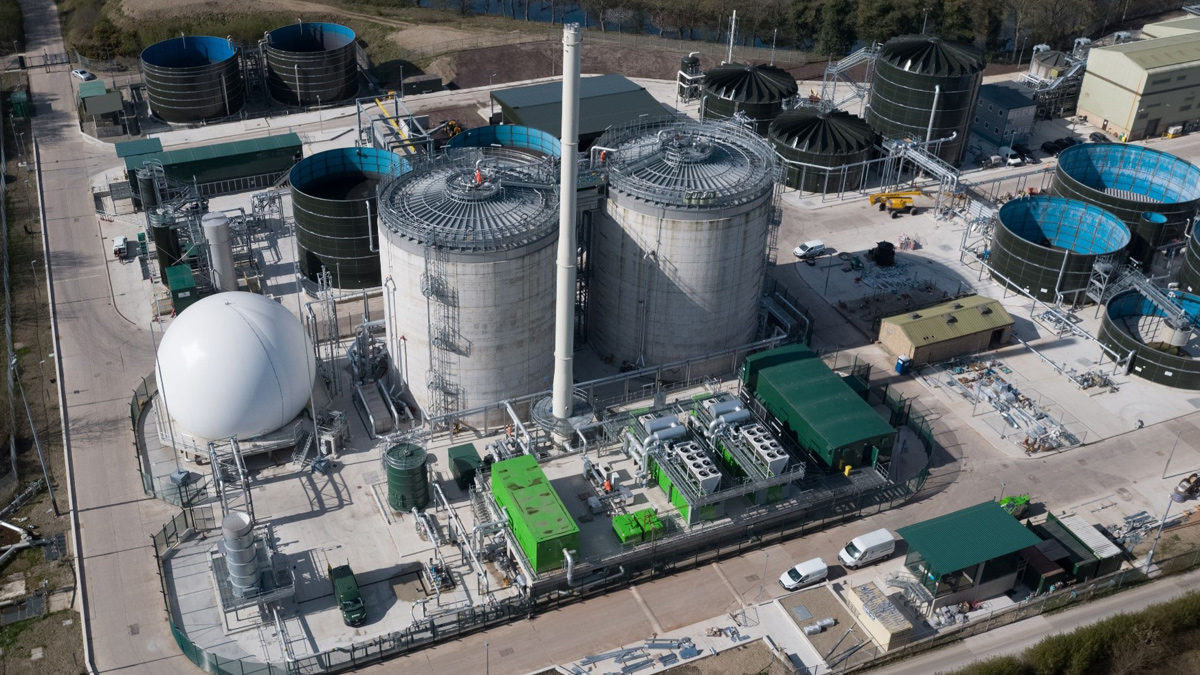
Digestion plant – Courtesy of YWS
Sludge dewatering: Progress August 2021
The sludge decanters were commissioned as part of Key Date 2 in December 2020. More recently the lime addition has been brought on stream, to provide a sanitised sludge. Initial testing has demonstrated HACP compliance and sludge cake DS concentrations of 26-30%. The return liquor treatment plant is currently being commissioned. The dewatering plant comprises:
- 2 (No.) dewatering feed tanks: Digested sludge is transferred by gravity to these storage tanks.
- Lime addition: Sludge is pumped from the dewatering feed tanks to the lime mixing tank. Powdered quick lime is added, to raise the pH of the sludge, increasing biological inactivation to achieve conventionally treated sludge status.
- 2 (No.) dewatering centrifuges: The centrifuges dewater the limed digested sludge to >25% DS prior to loading onto HGVs for export.
- Final product storage: A cake barn provides storage for 844m3 of sludge cake.
- Liquor treatment plant: The E&RF has a purpose-built liquor treatment plant (LTP) which is based on the Amtreat® process (supplied by ACWA Services). The ammonia levels from the LTP will be reduced prior to returning to Lower Brighouse STW such that the liquors do not have a detrimental impact on the existing activated sludge process.
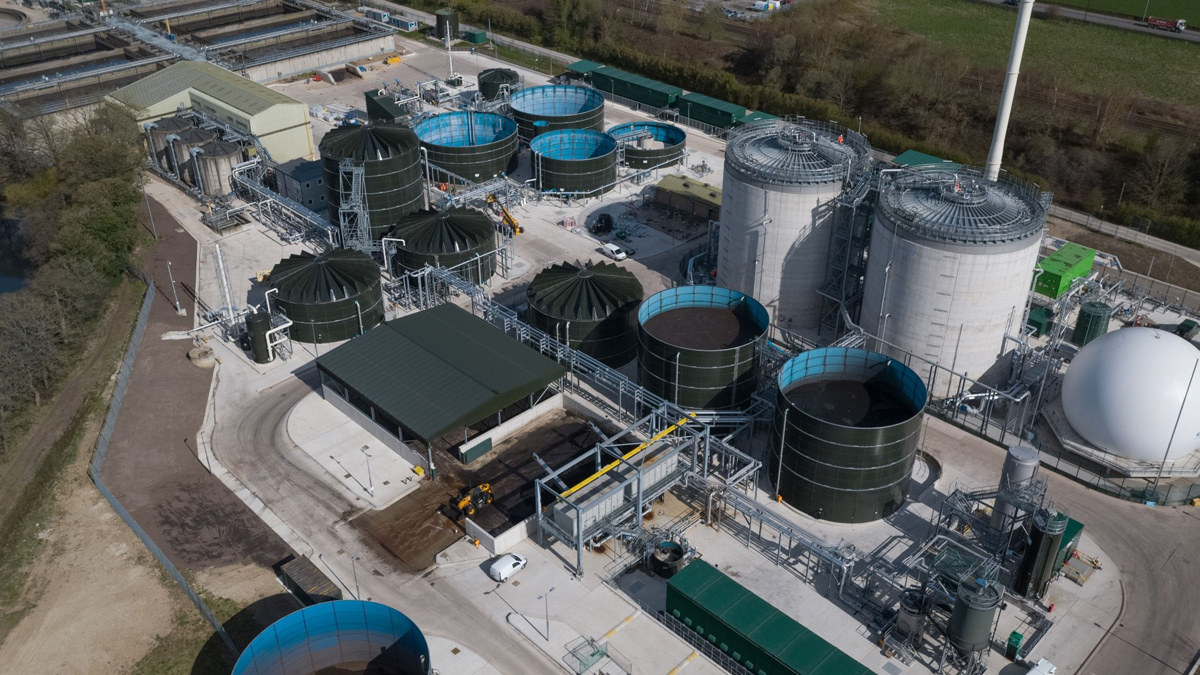
Sludge dewatering – Courtesy of YWS
Progress summary
Although the Covid-19 pandemic hit at a critical period in the project delivery, site works never stopped and Yorkshire Water, J Murphy & Sons, suppliers and subcontractors adapted to new ways of working. This allowed the delivery of project to remain on programme.
The new thickening and sludge dewatering facility were brought online in December 2020. This was followed by the import sludge (liquid and cake streams) in March 2021. Seeding of the digesters commenced in May 2021 and they are now fully operational, including the boiler and CHP. Lime addition to digested sludge commenced in June 2021 and a sanitized sludge is being achieved. At the time of writing (August 2021) the RLTP is being commissioned.
The completion for the energy and recycling facility is planned for October 2021.






